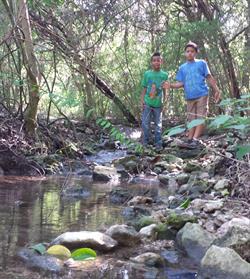 Protection for the nation’s clean water has been the centerpiece of the Izaak Walton League’s mission since its very first meeting in January 1922. The League scored many victories beginning in the 1920s—establishing the Upper Mississippi River National Wildlife and Fish Refuge and winning protections for the Boundary Waters area of Minnesota and Iowa’s Cedar River among other waterways. Our first 50 years of clean water advocacy culminated in the Clean Water Act, signed into law in 1972.
Protection for the nation’s clean water has been the centerpiece of the Izaak Walton League’s mission since its very first meeting in January 1922. The League scored many victories beginning in the 1920s—establishing the Upper Mississippi River National Wildlife and Fish Refuge and winning protections for the Boundary Waters area of Minnesota and Iowa’s Cedar River among other waterways. Our first 50 years of clean water advocacy culminated in the Clean Water Act, signed into law in 1972.
The League spent the next 50 years supporting, strengthening and defending the Clean Water Act as the bedrock conservation law that safeguards America’s water.
Then in 2023, the Supreme Court drastically narrowed the scope of the Clean Water Act by eliminating protections for wetlands and tributary streams except in extreme, limited circumstances. That decision, Sackett v. EPA, ended protections for a majority of the nation’s wetlands and millions of miles of streams. Tributary streams influence downstream waters, and one in three Americans get drinking water from public systems that rely, at least in part, on these small streams. Yet, the Court ignored the plain language of the Clean Water Act that clearly articulates congressional intent to protect these waters.
What We Must Do Now
The Izaak Walton League has never backed down from the fight for clean water. First, we have to conserve wetlands using every tool available. Second, we must protect waters at the source by keeping a watch on neighborhood streams and wetlands. Alarms must be raised as soon as problems begin to surface.
The League is already engaged on both of these fronts, with robust advocacy for wetlands conservation, especially the upcoming Farm Bill. And we have enlisted a growing cadre of volunteer stream monitors across the nation who gather water quality data.
But ultimately, Americans must convince Congress to amend the Clean Water Act to clarify once and for all that this fundamental law protects wetlands and tributary streams. The League is mobilizing now to build a grassroots movement that pressures lawmakers to act.
Our Outdoor America magazine broke down what the Sackett decision means for clean water in America. Continue reading.